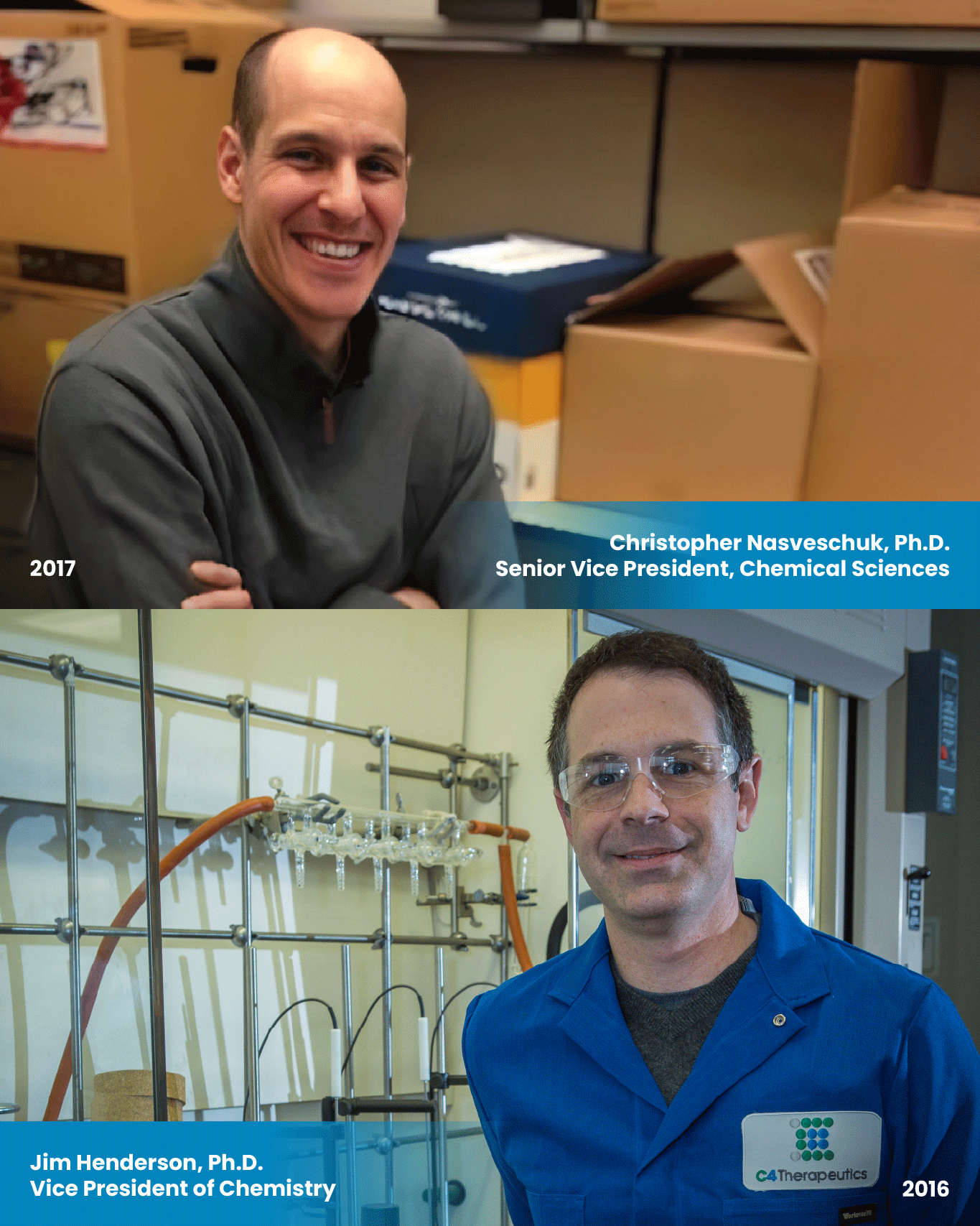Building the Foundations for a New Class of Medicines
An inside look at a seminal brainstorming session
It’s a big responsibility to be one of the first to enter a new space, but when C4T was founded in 2015 we were ready for the challenge to help build the targeted protein degradation (TPD) field and establish a novel drug modality to improve upon existing treatments. Now, as we’ve reached our 10-year anniversary, we’re looking back at the key moments that brought us where we are today.
In the early days of TPD, designing degraders was challenging because there were only a few research publications on the topic and the best understood degraders had been discovered by serendipity. To fill this nearly blank molecular canvas, our scientific leadership team met for an all-day brainstorming session. The resulting burst of creativity led to C4T’s TORPEDO® Platform, a 10,000-compound library, and a new way of viewing targeted protein degraders.
The key to C4T’s success was the team’s boldness and imagination.
“The prevailing wisdom was that, if you want a molecule that binds to Cereblon, an initiator of the body’s natural degradation process, it had to look like molecules that were already known to bind Cereblon,” said Chris Nasveschuk, our senior vice president of chemical sciences. “We didn’t believe that. We blew that hypothesis out of the water.”
In particular, at this meeting we approached degrader design from a medicinal chemistry perspective, setting out to address problems that the field wouldn’t encounter for several years such as oral bioavailability and blood-brain barrier permeability. Instead of relying on the limited tools available, we built a new tool kit for designing degraders against a wide range of targets.
“People at the time were dipping their toes into the degrader waters and we had the attitude that we are going to make drugs from this,” said Chris.
“We wanted to push our designs as far as possible rather than thinking ‘it’s good enough for now, let’s move on’,” said Jim Henderson, our vice president of chemistry who helped the team venture into the large molecule space. “In my previous experience, I had worked on projects with very large molecules, and saw that you could get high potency, selectivity and oral bioavailability. When this new opportunity in the degrader space was presented, I had confidence that a thoughtful design of novel Cereblon binders would help us achieve these drug-like attributes.”
Ten years later, Chris’ and Jim’s innovative approach have come to fruition with TORPEDO® yielding a rich pipeline of drug candidates that are being developed internally as well as in partnerships with biopharmaceutical companies. More generally, targeted protein degradation has been recognized as an essential modality with a bevy of other biotech companies joining the field and nearly all large pharmaceutical companies having a team or collaborator in the space.
Our team is also continuing to innovate based on new learnings on how Cereblon engages its targets.
“Cereblon is a dynamic protein with a lot of points of contact. So, every molecule and target you bring to it is an opportunity for invention and iteration,” said Chris. “The evolution of the toolkit hasn’t stopped. We’re always thinking about how to push the limits of it.”
